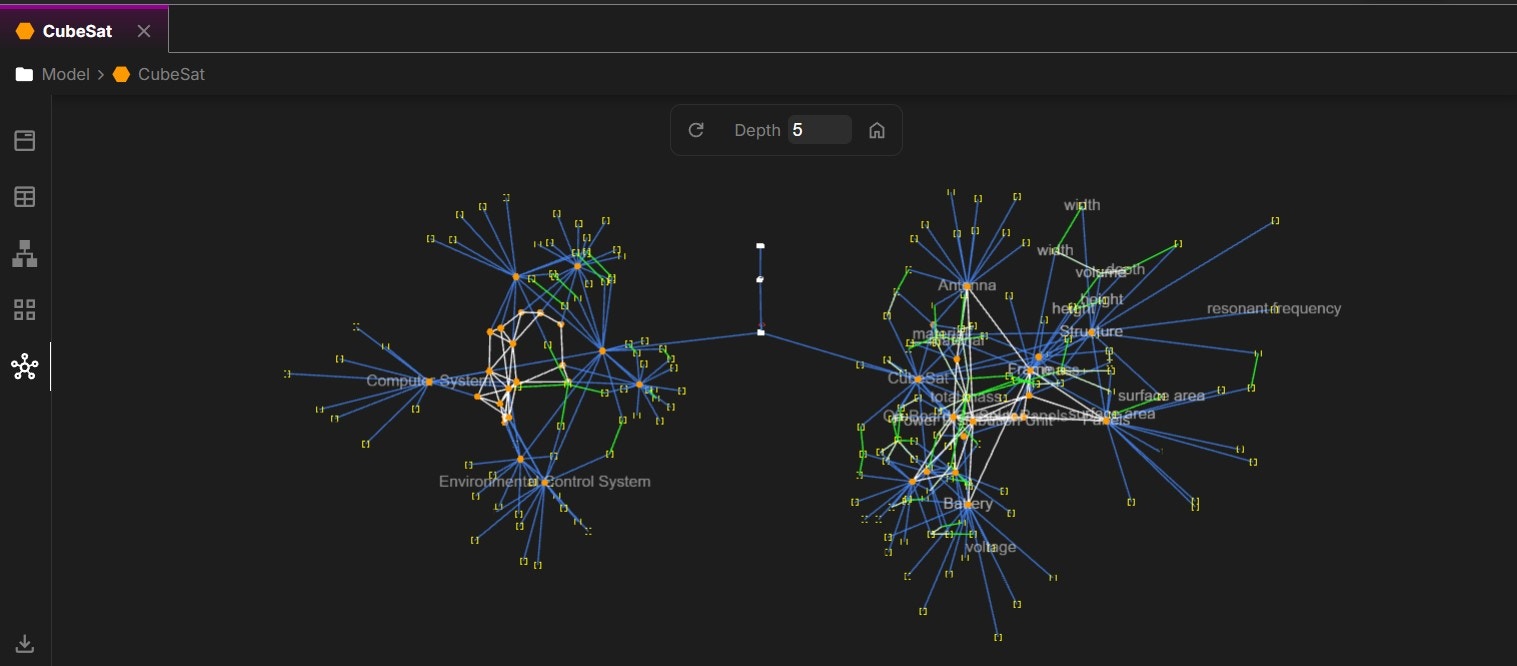Description
Beyond the main views that enable extensive editing, several additional views provide unique ways to display data, helping to better understand the model and its context. These views are summarized below.Make sure to refresh rendered views to get the latest value updates in the model.
Table View
The Table View presents summary tables of objects, organizing them by rows based on object type (including their descendant paths). Different fields or child objects can be toggled for display. Indentation represents parent-child relationships and their depth.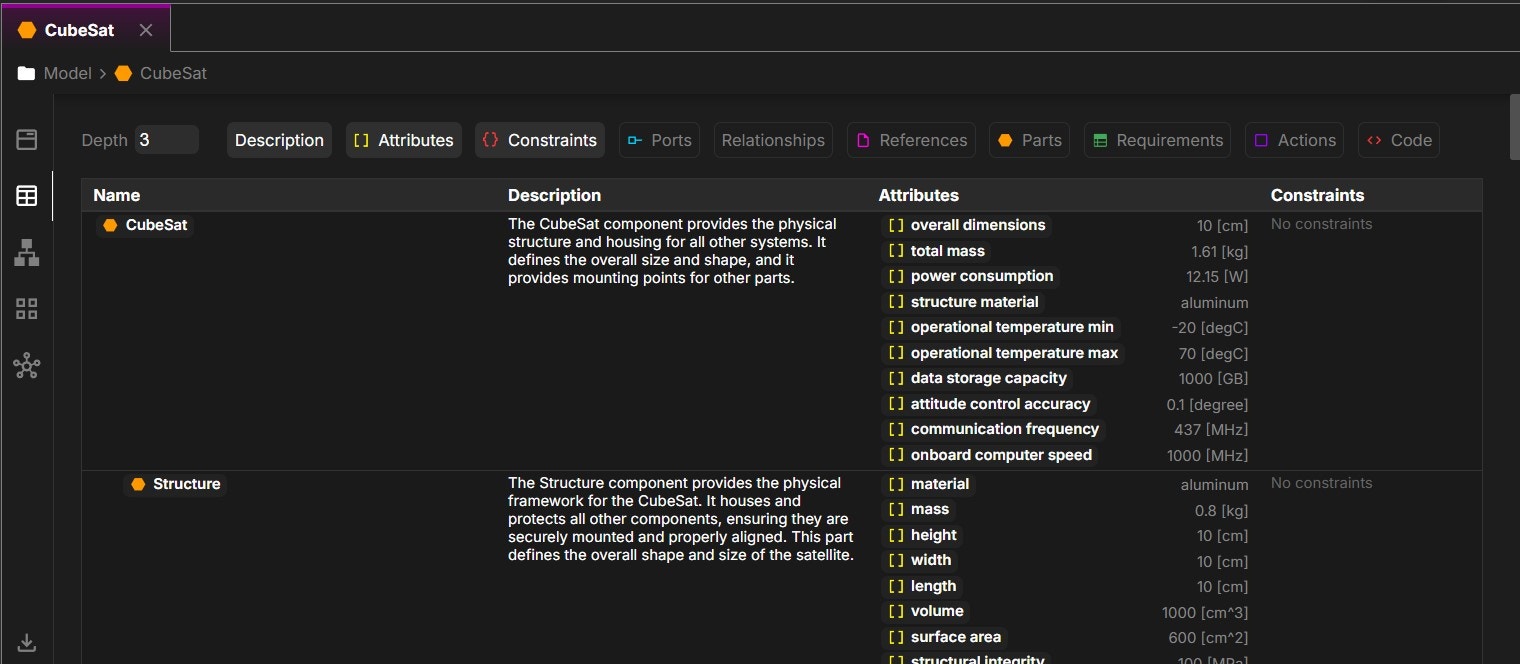
Reference View
The Reference View displays details of reference objects, which vary depending on the reference file type:- Text or simple data objects (CSV, JSON) are rendered as raw text.
- PDF files are displayed using a PDF viewer.
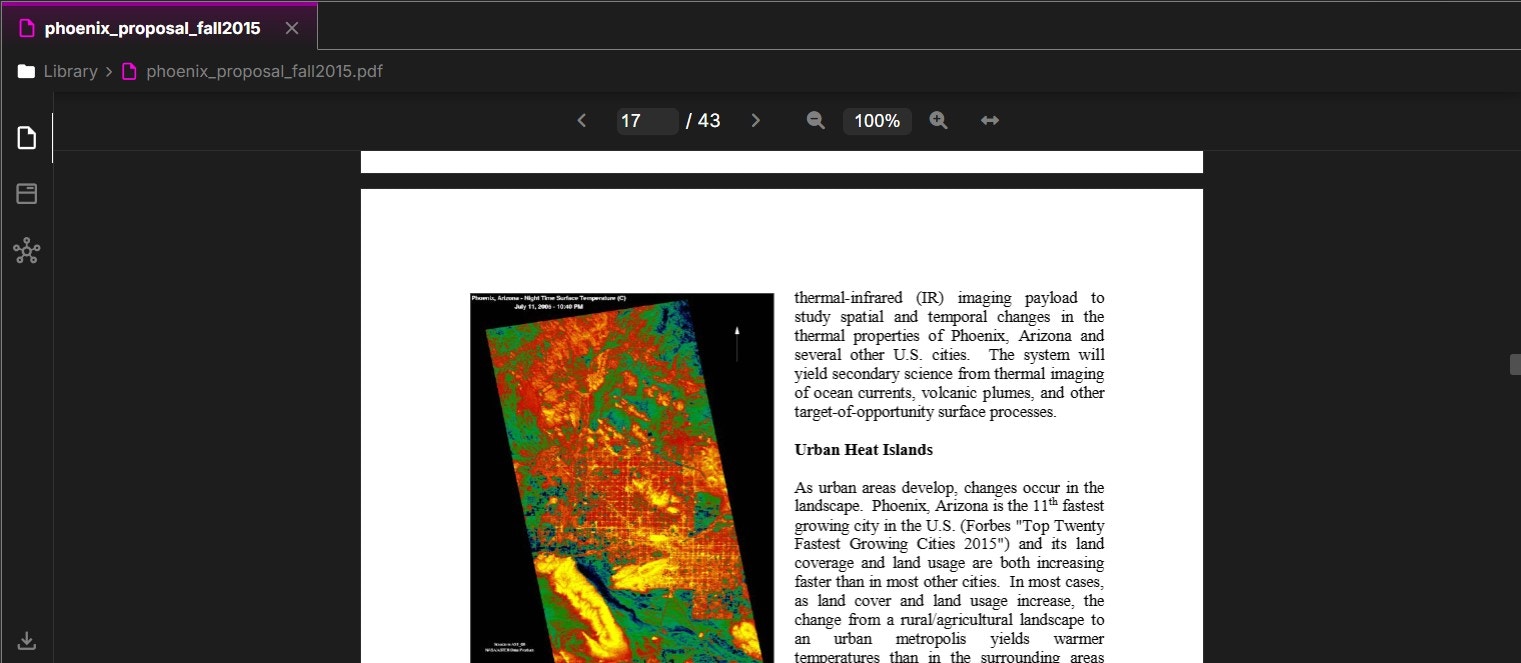
Tree View
The Tree View provides a hierarchical breakdown of the object’s descendant tree. For each block in the tree, you can toggle the display of related owned objects or accompanying documentation.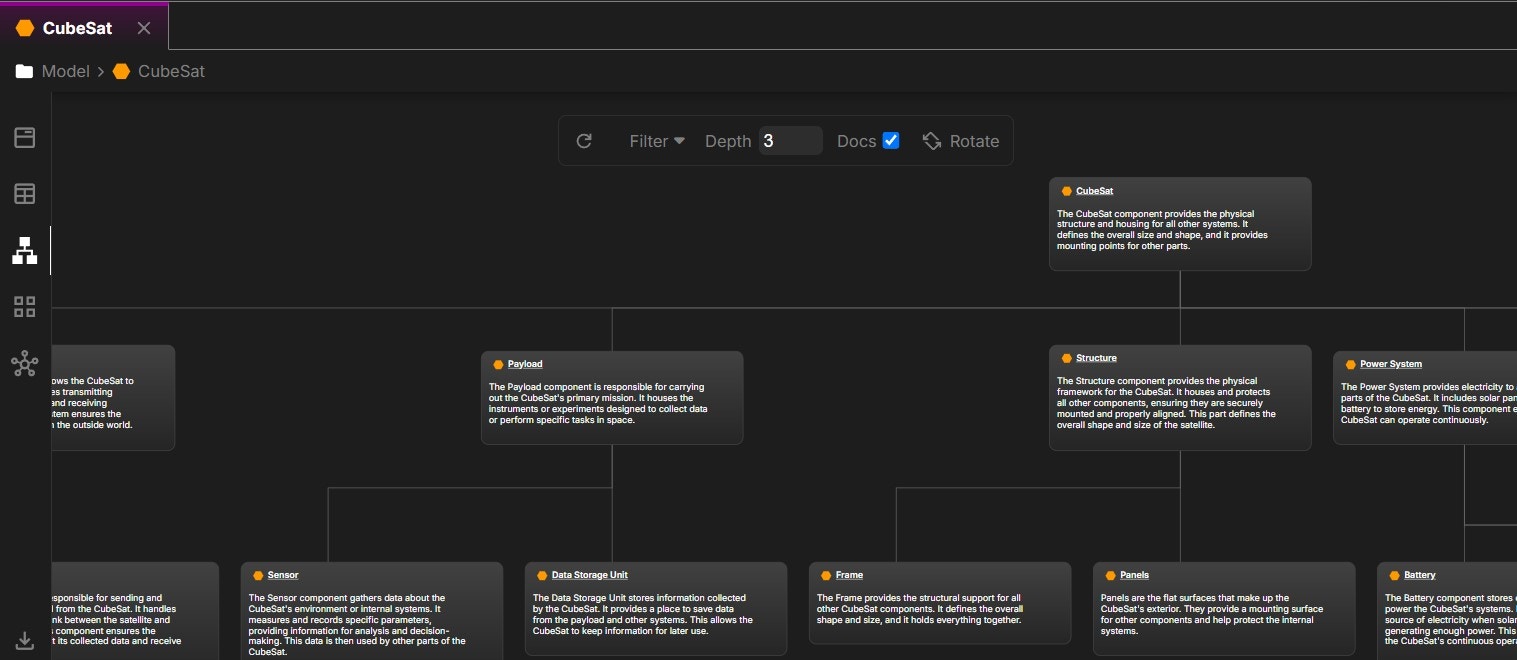
Equation Rollup View
For attributes, the tree does not represent owned attributes but rather the referenced values used in equations. It visualizes the roll-up tree that determines the attribute values.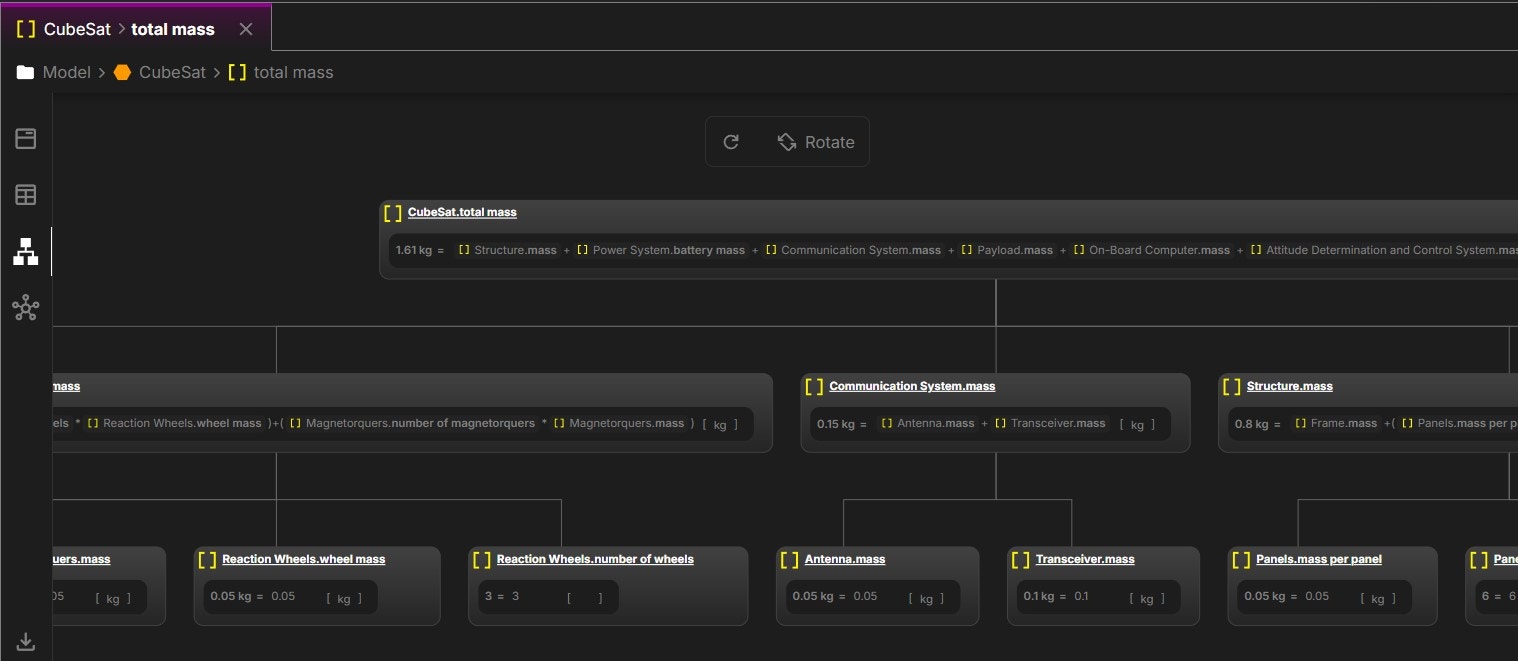
Block View
The Block View illustrates relationships between different parts and any port interfaces between them in a block diagram format.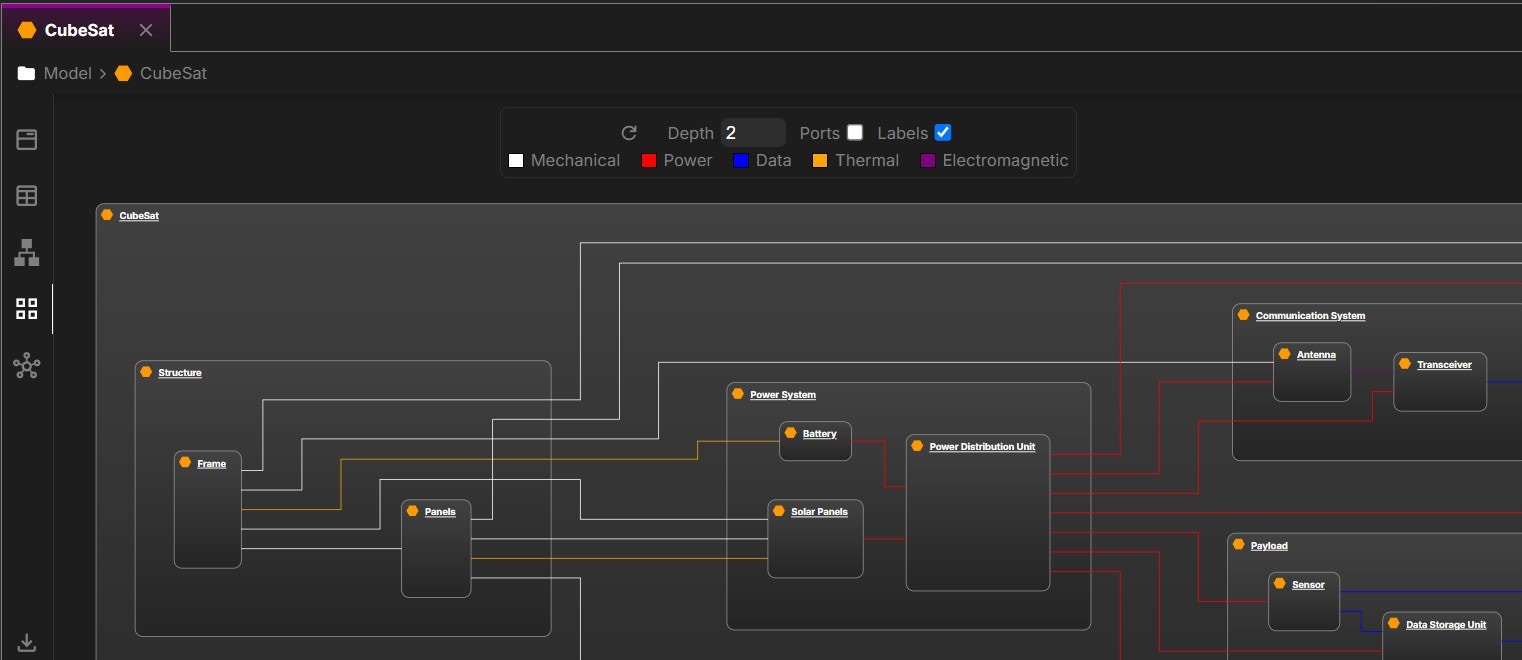
Relationships at lower-level children will infer connections when viewing upper level objects. These inferred relationships are shown with dotted lines.
Only relationships that specifically exist between parts are displayed in this view.
Digital Thread View
The Digital Thread View visualizes relationships between objects in a 3D space, based on the number of connections and their density. You can specify the depth relative to the focus object.